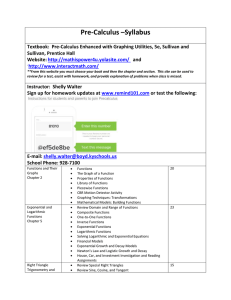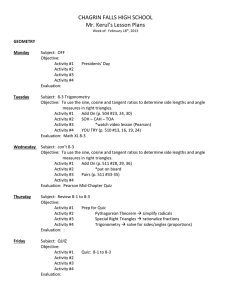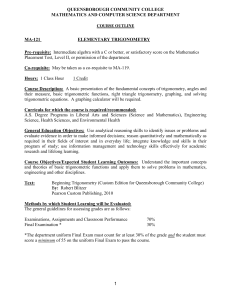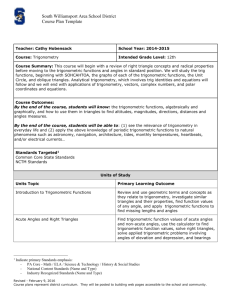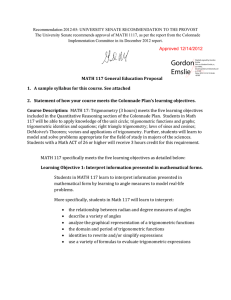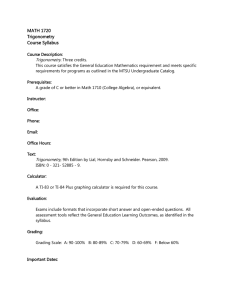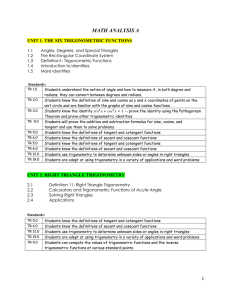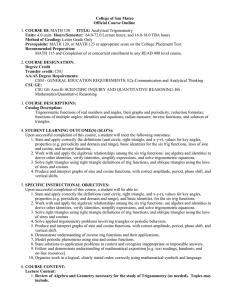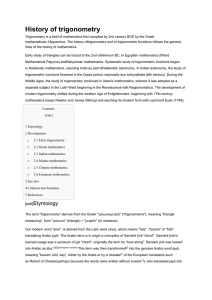Lesson plan - South Williamsport Area School District
advertisement
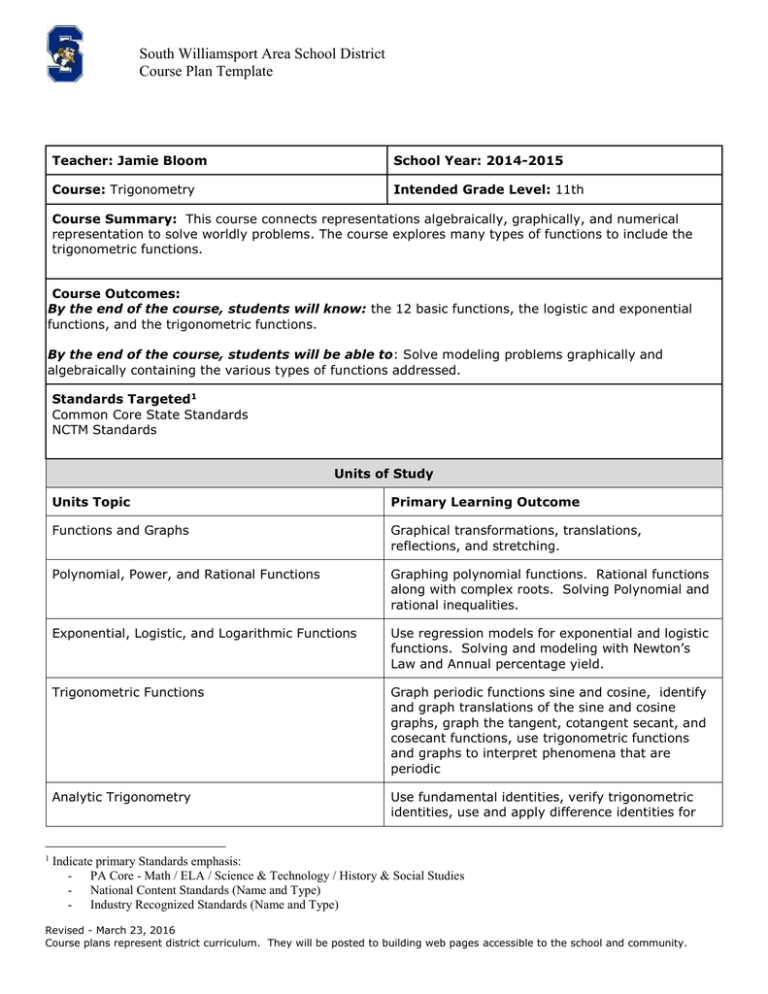
South Williamsport Area School District Course Plan Template Teacher: Jamie Bloom School Year: 2014-2015 Course: Trigonometry Intended Grade Level: 11th Course Summary: This course connects representations algebraically, graphically, and numerical representation to solve worldly problems. The course explores many types of functions to include the trigonometric functions. Course Outcomes: By the end of the course, students will know: the 12 basic functions, the logistic and exponential functions, and the trigonometric functions. By the end of the course, students will be able to: Solve modeling problems graphically and algebraically containing the various types of functions addressed. Standards Targeted1 Common Core State Standards NCTM Standards Units of Study 1 Units Topic Primary Learning Outcome Functions and Graphs Graphical transformations, translations, reflections, and stretching. Polynomial, Power, and Rational Functions Graphing polynomial functions. Rational functions along with complex roots. Solving Polynomial and rational inequalities. Exponential, Logistic, and Logarithmic Functions Use regression models for exponential and logistic functions. Solving and modeling with Newton’s Law and Annual percentage yield. Trigonometric Functions Graph periodic functions sine and cosine, identify and graph translations of the sine and cosine graphs, graph the tangent, cotangent secant, and cosecant functions, use trigonometric functions and graphs to interpret phenomena that are periodic Analytic Trigonometry Use fundamental identities, verify trigonometric identities, use and apply difference identities for Indicate primary Standards emphasis: - PA Core - Math / ELA / Science & Technology / History & Social Studies - National Content Standards (Name and Type) - Industry Recognized Standards (Name and Type) Revised - March 23, 2016 Course plans represent district curriculum. They will be posted to building web pages accessible to the school and community. South Williamsport Area School District Course Plan Template cosine, sine, and tangent, use double-angle identities, and use half-angle identities. Solve oblique triangles using the law of sines, solve oblique triangles using the law of cosines, use operations of vectors, and apply vectors. Applications of Trigonometry Review complex numbers and their operations, write the trigonometric form of complex numbers, use the product and quotient theorems in trigonometric form, use De Moivre’s Theorem, and graph and solve polar equations Advanced Learner Recommendations Advanced learners in Trigonometry can see the teacher for a higher level/more motivating application to real world problems. These students can focus on the conceptual thinking by doing less practice problems and more concept check and application problems. Struggling Learner Recommendations Flex period is available to struggling learners to get help with homework or review material covered in class. Struggling students can get extra practice and tutorial online help, , which is directly correlated with this course and textbook. Struggling students can be enroll in Applied Trigonometry which concentrates mainly on the sine, cosine, and tangent trigonometry functions. Testing offers multiple choice, matching, true/false problems along with the regular completion problems. IEP Students: All accommodations included in student’s Individual Educational Plan will be followed and modifications to the regular trigonometry curriculum will be made as needed for extra practice, testing, and homework by the learning support teacher. Revised - March 23, 2016 Course plans represent district curriculum. They will be posted to building web pages accessible to the school and community.

